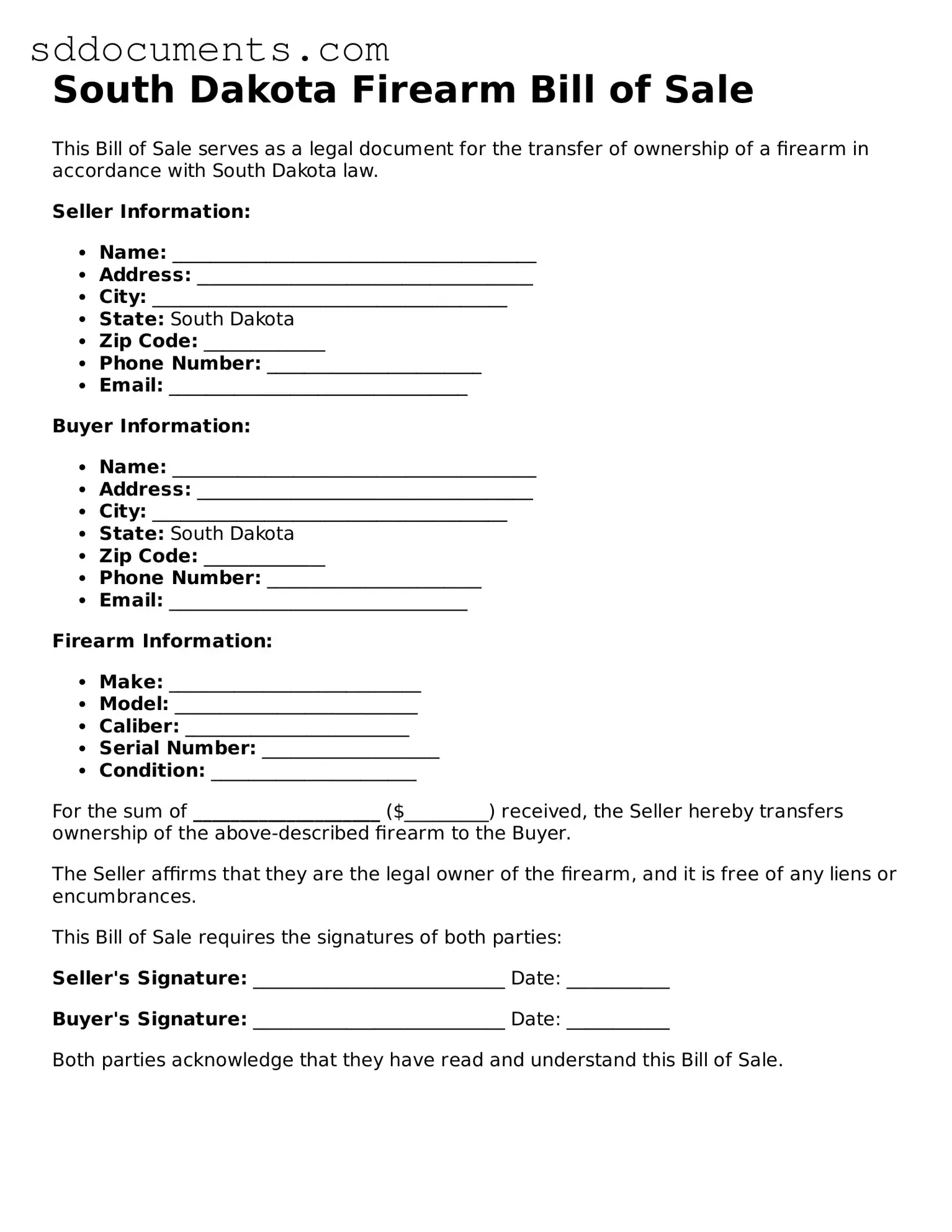Free Firearm Bill of Sale Template for South Dakota
The South Dakota Firearm Bill of Sale form is a legal document that records the sale or transfer of a firearm between parties. This form serves as proof of ownership and can help protect both the buyer and seller in the transaction. Understanding its importance is essential for anyone involved in the buying or selling of firearms in South Dakota.
To ensure a smooth and compliant transaction, consider filling out the form by clicking the button below.
Customize Document Online
